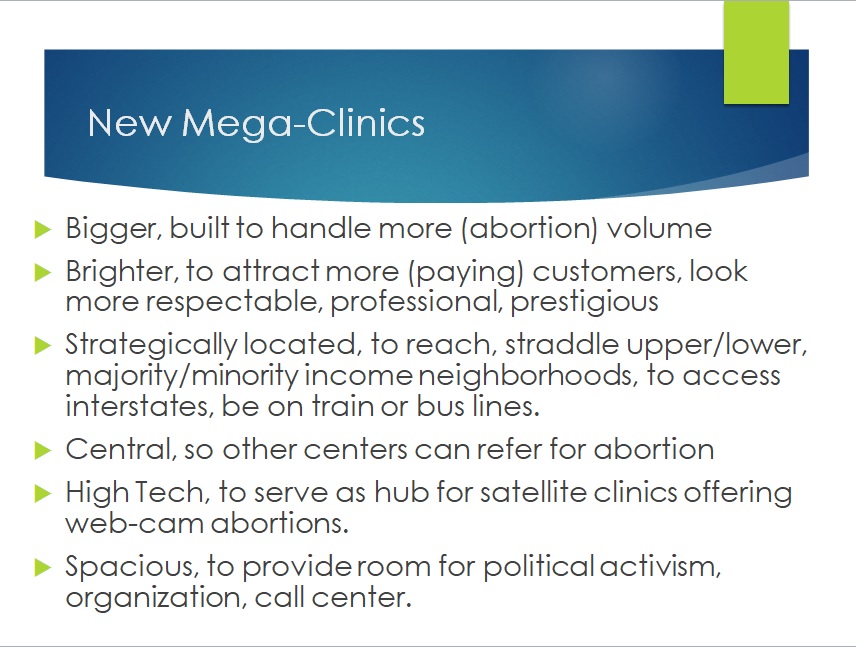For a running list on temporarily and permanently closed centers, see Temporary & Permanent Closings.
For the PP centers that don’t do abortions, see the bottom of the page: The Importance of “Referral Only.”
For the Virtual Centers and telehealth centers, see the bottom of the page: Telehealth
For PP centers for whom health inspections have generated health code violation documents, plus those states where health inspections aren’t even done, see Health Violations.
For a different website that documents problems such as health and privacy violations, malpractice suits, 911 calls, employee rights problems, financial ethics, and racism, see Problems at Planned Parenthood.
Breakdown of Numbers by State
PP centers which are listed as temporarily closed on PP’s national website are still included in these numbers.
States with no PP location (2): North Dakota, Wyoming
States (and DC) with just one PP location (5): Mississippi, Rhode Island, South Dakota, Washington DC, West Virginia
States with just two PP locations (9): Alabama, Arkansas, Hawaii, Idaho, Kansas, Kentucky, Louisiana, Nebraska, South Carolina
States with three (4): Alaska, Delaware, Nevada, Oklahoma
States with four (6): Georgia, Maine, Massachusetts, New Hampshire, New Mexico, Tennessee
States with five (1): Montana
States with 6-9 (7): Arizona, Iowa, Maryland, North Carolina, Utah, Vermont, Virginia
States with 10-19 (7): Colorado, Connecticut, Illinois, Indiana, Minnesota, Missouri, Oregon,
States with 20-29 (6): Florida, Michigan, New Jersey, Ohio, Pennsylvania, Wisconsin
States 30 or more: (4): Washington (30), Texas (33), New York (47), California (108)
Mega-Clinics

Thanks to Randy O’Bannon of the National Right to Life Committee for this PowerPoint slide.
The term “mega-center” was coined by pro-life organizations, and isn’t a name applied by Planned Parenthood itself. It’s the name for a trend for larger and more concentrated centers – while smaller centers are closing. This trend may make sense from a business point 0f view, though PP is technically a non-profit.
The good news is that it means that women have to travel further; some women will, but PP will lose a portion of women when they give up the advantages of decentralization and being nearby.
The bad news, of course, is that these centers are much stronger, and therefore likely to last longer than other ones.
Santa Ana, California
Colorado Springs, Colorado
Denver, Colorado
Washington, DC
Sarasota, Florida
Honolulu, Hawaii
Aurora, Illinois
Fairview Heights, Illinois
Flossmoor, Illinois
Waukegan, Illinois
Worcester, Massachusetts
Kalamazoo, Michigan
St. Paul, Minnesota
Lincoln, Nebraska
Omaha, Nebraska
Albany, New York
Long Island City, New York
Schenectady, New York
Charlotte, North Carolina
Fayetteville, North Carolina
Portland, Oregon
Springfield, Oregon
Providence, Rhode Island
Memphis, Tennessee
Austin, Texas
Dallas, Texas
Fort Worth, Texas
Houston, Texas
San Antonio, Texas
Richmond, Virginia (East End)
Virginia Beach, Virginia
Centers Open Only 1 or 2 Days a Week
Current count = 26
Last updated February 29, 2024. We link to the PP web page for the center so it can be easily verified; changes occur without notice.
California (1) – Clearlake
Colorado (1) – Cortez
Idaho (1) – Twin Falls
Minnesota (2) – Alexandria, Willmar
New York (10) – Amsterdam, Clifton, Goshen, Johnstown, Lowville, Malone, North Tonawanda, Ogdensburg, Saranac Lake, Saratoga Springs
New Jersey (2) – Bellmawr, Washington
Pennsylvania (3) – Johnstown, Lancaster, Moon Township
Washington (1) – Friday Harbor
Wisconsin (5) – Eau Claire, Portage, Sheboygan, West Bend, Wisconsin Rapids
